- Administrator
- Albums and Singles
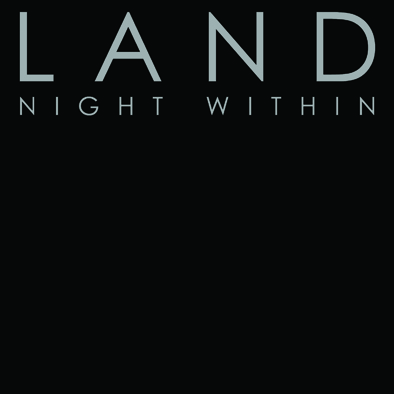 This is easily one of the most intriguing and enigmatic debuts to surface this year, as two musicians that I am completely unfamiliar with (Daniel Lea and Matthew Waters) have managed to assemble a killer noir jazz ensemble and enlist collaborators as impressive as Ben Frost and David Sylvian. Although they draw their inspiration from a wide array of disciplines (Gerhard Richter and Paul Auster are influences), the resultant music is extremely narrow in scope (or, more charitably, "focused" and "thematically coherent"). Night Within is essentially all brooding nocturnal atmosphere and texture with little in the way of songcraft, but Land are almost so good at what they do that it does not matter.
This is easily one of the most intriguing and enigmatic debuts to surface this year, as two musicians that I am completely unfamiliar with (Daniel Lea and Matthew Waters) have managed to assemble a killer noir jazz ensemble and enlist collaborators as impressive as Ben Frost and David Sylvian. Although they draw their inspiration from a wide array of disciplines (Gerhard Richter and Paul Auster are influences), the resultant music is extremely narrow in scope (or, more charitably, "focused" and "thematically coherent"). Night Within is essentially all brooding nocturnal atmosphere and texture with little in the way of songcraft, but Land are almost so good at what they do that it does not matter.
I suspect "noir jazz" may not be quite the right term for Land's aesthetic, but Lea and Waters have carved out a very strange and amorphous niche for themselves and that seems to be the closest recognizable signpost.  Saxophones and trumpets are certainly rampant and the pervasive mood is undeniably "noir," but I suspect an actual jazz musician would balk at Land's rhythm section.  On pieces like the slinky Sylvian-sung "Nothing is Happening Everywhere," drummer Paul Cook fits the bill, but other pieces lock into grooves that could be better described as motorik ("Cold Desire") or even quasi-industrial ("Stillman").  More often still, the rhythm section sounds like they are playing at a strip club in a David Lynch movie (which is probably a compliment).  All, of course, nicely evoke the "urban neon dislocation" mood that Lea and Water are after (though the motorik beat is definitely pushing it).
For a debut album, this ensemble nails pretty much every single goddamn detail.  It is almost uncanny: every deep guitar twang and soulful sax lick sounds like it is exactly where it belongs and there is no clutter, bloat, or noodling.  Even the instruments on the periphery (woodwinds, bowed cymbals, etc.) are employed with unwavering good judgment, subtly coloring the proceedings with equal parts menace, melancholy, and sensuousness.  Equally importantly, it all sounds fantastic–the grooves are heavy and visceral and the music perfectly balances between clarity and haziness.  I suspect that is mostly the result of Ben Frost's mixing and "sculpting," but it is such an integral part to the band's sound that it seems likely that Daniel Lea (credited with "sound design")  had some very clear ideas about how Night Within needed to sound beforehand.
Naturally, the big hook for this album is David Sylvian's involvement, but that does Land a disservice.  Sylvian's "Nothing is Happening Everywhere" certainly stands out as one of the album's most memorable pieces, but that is more because it is an actual song than because David's presence elevated the band.  He does fit nicely into the band's aesthetic though.  Still, I suspect Lea and Waters could have similar success with a number of other vocalists...which brings me to Night Within's sole flaw: while these seven pieces are distinctive, beautifully constructed, and amazing sounding, they are all essentially vamps.  This is still a very good album due to its vision and impressive execution, but it essentially feels like a soundtrack without a movie.  As a result, this album falls short of greatness–there is a definite void that is simply not being filled.  Then again, this is only Land's debut, so it seems premature and unfair to criticize them for only being extremely stylish and evocative.
 
Read More
- Administrator
- Albums and Singles
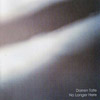 I have seen this album described elsewhere as "virtually a new Monos record" due to the participants, but Tate's latest effort is a bit more modest than that.  Originally recorded as a guitar and synth solo album, Darren handed his work over to the very capable Colin Potter for a thorough "re-imagining."  I can only guess at what No Longer Here sounded like before Potter's involvement (the droniest drone ever?), but the end result is 45 minutes of beautifully immersive and darkly hallucinatory bliss.
I have seen this album described elsewhere as "virtually a new Monos record" due to the participants, but Tate's latest effort is a bit more modest than that.  Originally recorded as a guitar and synth solo album, Darren handed his work over to the very capable Colin Potter for a thorough "re-imagining."  I can only guess at what No Longer Here sounded like before Potter's involvement (the droniest drone ever?), but the end result is 45 minutes of beautifully immersive and darkly hallucinatory bliss.
By drone standards, this is a pretty unusual release.  That was not immediately apparent to me, as it is mixed rather quietly, but I was quickly mesmerized once I cranked it up loud enough to hear its nuances.  The sole piece is essentially built upon a low quavering bed that remains melodically static (I think) for its entire duration.  Despite the lack of any kind of obvious chord change or melodic evolution, Tate's unrelenting river of drone remains quite vibrant by constantly shifting in texture, density, and coloration.
It happens very slowly, of course, but the transformation from its early hollow throb to the lush yet ghostly thrum of its climax is thoroughly absorbing.  In fact, Tate's sublime, glacially shifting drones could have probably carried the album on their own, but the surreal and subtly nightmarish sounds that unfold over the top of them are what elevate this effort into something more substantial and noteworthy.  I suspect that this is where Potter's influence is most apparent, though Darren has certainly unleashed some unsettling sounds on his own in the past.
As painful as it is for me to belabor a water metaphor, I am afraid that it is too apt to avoid here: Tate's "river of drone" is not a clear, cheerfully burbling one; it is a slow, murky, and deep one and disturbing sounds endlessly billow up from the depths like bodies.  I suspect most of the sounds may have once originated from Tate's guitar, but in Potter's hands they seem unrecognizably strangled, drowned, and stretched.  Equally importantly, they blend so deftly into the underlying rumble as to seem like an organic part of it.  Also, Tate and Potter demonstrate an impressive knack for weaving their moans and swells into slow, hypnotic pulses and for transitioning seamlessly from a mood of cosmic horror to slightly uneasy warmth within the same piece.  There is a very real sense of flow and purpose here.
In general, it is pretty hard to go wrong with anything that either Tate or Potter is involved with, but they work especially well together and this is something of a unique release within their oeuvres.  While it is not exactly a "difficult" album, No Longer Here certainly required some attention and focus on my part to fully reap its rewards (it practically begs for headphones).  The effort was very much worth it, as drone is rarely this deep and satisfying (or aberrant)  This is drone music for connoisseurs.
Samples:
Read More
- Administrator
- Albums and Singles
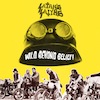 Equal doses of Hell’s Angels, bad drugs, and Russ Meyer; Clayton Burgess' downer biker metal hits the spot like a tire iron across the jaw. More The Born Losers than Sons of Anarchy, Satan's Satyrs deserve the term badass as much as any b-movie anti-hero. This is music that has come to town, decided it wants your girl and she has decided she prefers them to you.
Equal doses of Hell’s Angels, bad drugs, and Russ Meyer; Clayton Burgess' downer biker metal hits the spot like a tire iron across the jaw. More The Born Losers than Sons of Anarchy, Satan's Satyrs deserve the term badass as much as any b-movie anti-hero. This is music that has come to town, decided it wants your girl and she has decided she prefers them to you.
The lo-fi rumble heralds Burgess’ coming like the roar of Harleys coming down the empty highways. It sounds like trouble, the kind of trouble I want to be a part of. The scuzzy music of Satan’s Satyrs has the same violent and crazy vibe of early Electric Wizard but cut with speed instead of weed. On "Carnival of Souls," Burgess lets rip with some face-melting fuzz guitar and reveling in his outsider status: "Alien I’ve always been/Recoil from helping hand." (I envision him playing his guitar with a switchblade rather than a pic.)
While never reaching the out and out camp of The Wild Bunch, Burgess sometimes swerves dangerously close to parody. However, much like the aforementioned Wizard, the reverence for ‘70s exploitation imagery and 1%-er biker attitude seems too genuine to be mistaken for a joke (otherwise I am sure they would be Satan’s Satires). "Strange Robes" blows out the speakers like an over-revved engine; the music cloaking the room in thick black exhaust smoke.
The album peaks with the fantastic "Bellydancer’s Delight" which coils around the room like a snake before going straight for the throat with a phenomenal instrumental coda. Suddenly it bursts into the album’s closer, "Satan’s Satyrs." The killer riff is backed with simple but brilliant organ. The result is a terrific, adrenaline-pumping finish to a grimy, greasy album of filth. As the last notes echo away, it is hard not to imagine the back of a leather-clad motorcyclist heading into the horizon, middle finger raised back at you.
 
Read More
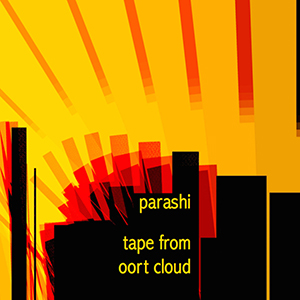 Having recently put out a double disc package with Anthony Pasquarosa, and another collaboration with Noise Nomads, the Albany, New York area noise master Mike Griffin has managed to compile yet another set of spacey, at times aggressive, but always fascinating abstract electronics. The first is a full vinyl LP of solo work, courtesy of the always amazing Sedimental label, and the second a collaborative release with meme slinger John Olson. Griffin's style is consistent between the two work, but the differing contexts give each a unique and distinct feel, differing from one another.
Having recently put out a double disc package with Anthony Pasquarosa, and another collaboration with Noise Nomads, the Albany, New York area noise master Mike Griffin has managed to compile yet another set of spacey, at times aggressive, but always fascinating abstract electronics. The first is a full vinyl LP of solo work, courtesy of the always amazing Sedimental label, and the second a collaborative release with meme slinger John Olson. Griffin's style is consistent between the two work, but the differing contexts give each a unique and distinct feel, differing from one another.
- Administrator
- Albums and Singles
 Having recently put out a double disc package with Anthony Pasquarosa, and another collaboration with Noise Nomads, the Albany, New York area noise master Mike Griffin has managed to compile yet another set of spacey, at times aggressive, but always fascinating abstract electronics. The first is a full vinyl LP of solo work, courtesy of the always amazing Sedimental label, and the second a collaborative release with meme slinger John Olson. Griffin’s style is consistent between the two work, but the differing contexts give each a unique and distinct feel, differing from one another.
Having recently put out a double disc package with Anthony Pasquarosa, and another collaboration with Noise Nomads, the Albany, New York area noise master Mike Griffin has managed to compile yet another set of spacey, at times aggressive, but always fascinating abstract electronics. The first is a full vinyl LP of solo work, courtesy of the always amazing Sedimental label, and the second a collaborative release with meme slinger John Olson. Griffin’s style is consistent between the two work, but the differing contexts give each a unique and distinct feel, differing from one another.
Sedimental/Skell, Radical Documents
The Oort Cloud referenced in the album’s title is a theoretical cloud that is wrapped around our solar system, collecting and shaping what detritus of our cosmos may be passing through.It is a fitting title, given that there is a celestial, yet fragmented feel throughout the album.Griffin's work has never easily been categorized, since it often draws from the chaotic lands of harsh noise, but at the same time also gentle passages of ambient, and the blips and beeps of early electronic music.On "The Vanishing Coast" this is quickly established via shimmering feedback and idling engines, accented with a heavy bass pulse throughout.From this he begins to add in even more elements:falling, twinkling stars and jazzy simulations of small animal chirps all appear.As a whole the piece brilliantly juxtaposes sputtering, erratic bits and sustained drone elements, with the occasional wide open space for remains of sound to drift through.
"Broadcast Failures" has a colder vibe, with sputtering duck calls and swells of static setting the stage.There is more of 1960s science fiction feel here, with squeaking computer glitches and electronic beeping throughout.Again, Griffin nicely blends these cleaner, tonal sounds with some good heavy crunch as well.Things lean a bit psychedelic as he reverses the layers, and with the combination of sparse mixing, spacey movement and bleak falling tones, it makes for a frigid, cosmic journey.
On the flip side, Griffin scales back the entropy and focuses more on sustained sounds and tones."Tape from Oort Cloud" may lead with a heavy low end rumble, but for the most part Griffin keeps the electronics restrained, having an overall muted feel with some outbursts of sound to be had.Some lighter passages appear throughout, but overall the sense is more grounded and depressive.After a series of raygun-like pulses, he introduces a melodic sequence that propels the piece to a gentle conclusion."Depths of Babylon" may begin with a cascading bass crunch and metallic buzz, but Griffin’s use of loops and melodic passages result in the record ending with an almost new age hue.
samples:
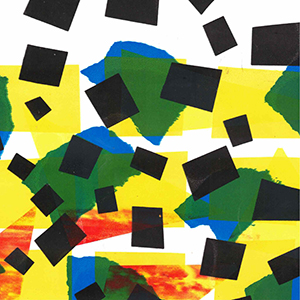
It is no surprise that for the 7" with John Olson (in his Spykes guise), Griffin's work ends up a bit harsher in nature.The A side has his usual cosmic electronics, but there is more of a dingy basement production here, so the reverberation of his electronics, with Olson's pained horns, makes for a creeping, menacing type feel to the proceedings.On the other side, the duo goes a bit more into free jazz realms.Olson’s loose and improvised horn lines bounce off Griffin’s waxy electronics perfectly.
Braille License Plates for Sullen Nights is certainly a fun excursion, but like any single released near a full-length record, Tape from Oort Cloud is where Parashi goes all out.I have been into all of Mike Griffin's collaborations in recent years, but the solo album format allows him to truly reach out and do what he does best.Complex, nuanced, and thematically strong while drawing from all varieties of electronic music and sound art, it is easily his strongest work to date.
Read More
- Administrator
- Albums and Singles
 Scrine is one of the earlier works from Hands To, the name solo artist Jeph Jerman was working with at the time. With the project's first release just a year before in 1987, he was already a seasoned practitioner in the mid to late 1980s noise cassette scene. Even at this stage his work was highly conceptual, using his environment as a primary source for his compositions. Compared to his later works under his own name, however, there is a major emphasis on the sounds of urban and suburban environments, and a raw, rough edge that summarizes that era of noise perfectly.
Scrine is one of the earlier works from Hands To, the name solo artist Jeph Jerman was working with at the time. With the project's first release just a year before in 1987, he was already a seasoned practitioner in the mid to late 1980s noise cassette scene. Even at this stage his work was highly conceptual, using his environment as a primary source for his compositions. Compared to his later works under his own name, however, there is a major emphasis on the sounds of urban and suburban environments, and a raw, rough edge that summarizes that era of noise perfectly.
Much of the methodology Jerman has used in recent works under his own name was present back in the days of Scrine, but the location and source material is where differences are quite prevalent.For example, there are a number of examples of Jerman using found items from his home in Arizona, rocks and other naturally occurring items.When Scrine was recorded, however, it was done from an area he describes as "high crime" in Colorado Springs, and from within a nearby alley and actual junkyard, he captures the sound of urban decay.
Many of the techniques he uses are anything but obvious, but when referring to his liner notes, the "guerrilla recording" techniques he uses make sense and can largely be identified.For example, opening piece "Whag" is a mass of gusty whistles and squeaky, waxy scrapes of sound.There is a semblance of rhythm, an extremely loose one, throughout, which makes sense given that the piece is the result of him swinging a microphone around in the air like a lasso.Even with a lot of space in the mix, there is something disorienting throughout "Firad."Distant rumbling and passing fragments of children playing all fit together considering it is a multi-tracked series of neighborhood field recordings.
Jerman is working from a sparse set of sounds for "Thraal," with surges of static and loose cable noise peppering throughout the detuned sounding radio and broken equipment sounds, but he manages to do a lot with them.Considering the source was largely recordings of an old street sign that rattled about on windy days, that sonic pedigree can easily be heard.While his own memory is spotty about the recordings, I have to wonder that if it is the chaotic knocking and collapsing building vibes of "Plathers" that were constructed with him putting a tape deck into a clothes dryer or if that pops up somewhere else.
The pieces on the other half of the tape have a slightly different feel to them, although there is no indication that it was intended to be a distinct work.There is an odd, almost melodic element to "Sinc" that sounds like manipulated phone tones, which ends up creating the core that the clattering junk noise is constructed around.The last two pieces, "Mastic" and "Biasis 2" are works in which Jerman inadvertently lays the groundwork for what will later be known as harsh noise wall.The sustained grind of the former, complete with cut up moments and heavy stabs of noise is not that dissimilar to what Macronympha would heavily lean into a few years later.Lengthy closer "Biasis 2" has him staying rather static in his approach.A slow, magma like flow of heavy noise, shifting from higher registers to bassy ones does not relent until its closing moments.The dynamic may be a bit monochromatic, but the subtle changes that Jerman makes throughout have a lot of impact, and result is an excellent piece of early harsh noise.
Scrine definitely captures the feel of the mid/late 1980s experimental scene with its lo-fi, all analog recording sound, but the ingenuity from Jeph Jerman is quite clear.The unique manner in which he captured his source materials and the ambiguous way in which he blends them together would be characteristic of his work for the remainder of his career.However, I felt it especially strong in the context of this older, rawer style of noise, making Scrine an amazing archival release that deserves greater recognition three decades later.
Read More
- Administrator
- Albums and Singles
Just in time for its twenty year anniversary as a label, Thrill Jockey Records is pleased to announce that noted electronic duo Matmos has joined the roster, and is about to release the most conceptually elaborate yet weirdly poppy record of their career. The timing is apt, as Matmos members M. C. Schmidt and Drew Daniel will also be celebrating their own twenty year anniversary as musical and romantic partners this fall. To celebrate the occasion, Thrill Jockey will present The Ganzfeld EP in October in advance of the new Matmos album, The Marriage of True Minds, which is forthcoming in early 2013.
The EP and the album have the same conceptual basis: telepathy. For the past four years the band have been conducting parapsychological experiments based upon the classic Ganzfeld ("total field") experiment, but with a twist: instead of sending and receiving simple graphic patterns, test subjects were put into a state of sensory deprivation by covering their eyes and listening to white noise on headphones, and then Matmos member Drew Daniel attempted to transmit "the concept of the new Matmos record" directly into their minds. During videotaped psychic experiments conducted at home in Baltimore and at Oxford University, test subjects were asked to describe out loud anything they saw or heard within their minds as Drew attempted transmission. The resulting transcripts became a kind of score that was then used by Matmos to generate music. If a subject hummed something, that became a melody; passing visual images suggested arrangement ideas, instruments, or raw materials for a collage; if a subject described an action, then the band members had to act out that out and make music out of the noises generated in the process of the re-enactment.
The Ganzfeld EP features two new Matmos tracks that are explicitly based upon psychic session material, and a throbbing minimal techno remix by RRose of the Matmos song "You." Careening from widescreen electronic pop to eerie choral music, the results are eclectic, fun, and disorienting in equal measure.
"Very Large Green Triangles (Edit)" begins with a tiny sung riff which the test subject Ed Schrader seemed to hear in his mind during his psychic session. This riff is paired with a classic Baltimore club beat and orchestral and choral stabs faintly reminiscent of Jerry Goldsmith's soundtrack music for "The Omen." The result is a kind of urban gothic anthem to a primordial geometric image generated during a psychic experiment (please consult the lyric sheet for the full transcript of Ed Schrader's wild and wooly psychedelic vision). Ed was asked to re-sing words and phrases from his psychic transcript, and these vocal snippets are chopped and stacked over a frantic vogue-ball kick drum pattern. This edited version is also the soundtrack to an animated music video currently in production by the Bay Area design and motion graphics company L-inc.
Transforming Matmos' original song into an ominous club-banger, on his remix of "You," RRose, of highly respected esoteric techno imprint Sandwell District, wreathes the whispered vocals of Carly Ptak (Nautical Almanac) in a funereal fog, and turns an amplified rubber band played by Jason Willett (Half Japanese) into a relentless bassline guaranteed to rock a warehouse party at a five am. Since you haven't yet heard the original version of this song, you can consider this remix a precognitive pre-mix.
"Just Waves" pushes in an entirely different direction, layering the voices of Matmos' own M.C. Schmidt and Drew Daniel with three other singers: Dan Deacon (you know who he is), Angel Deradoorian (Dirty Projectors), and Clodagh Simonds (Fovea Hex). Singing the transcripts of psychic experiments in pitched clusters of monotone sprechstimme reminiscent of the avant-garde "tele-operas" of American minimalist composer Robert Ashley, phrases recur and coalesce into a gradually emerging chord progression, supported by warm pulses of organ and synthesizer. Over the course of its nearly thirteen minutes, the sung transcripts move across a bewildering range of emotions, images and moods-- from mystical, to ludicrous, to strangely moving-- as the busy overflow of language consolidates into a single phrase repeated by all five voices in a resolving major chord. Are these people pulling our leg? What is the concept that stands at the origin of this experiment? The band's members aren't saying, but "Just Waves" offers a beguilingly complete vision all its own, exclusive to the EP.
More information is available here.

Read More
- Administrator
- Albums and Singles
Grapes and Snakes is the first collaborative work of two of the most respected American underground experimental/noise artists, Aaron Dilloway and Jason Lescalleet. Using purely analog synths and tape manipulation, they build a foggy psychoacoustic mass that lies between dynamic yet patiently treated tape-music and industrial howl.
Jason Lescalleet's sound world occupies a space between noise, contemporary composition, and minimal electronics. Using decidedly primitive tactics and equipment (e.g. antiquated reel-to-reel recorders, damaged tape, etc.), his work focuses on extreme frequencies and microscopic audio detail. He's been a member of Due Process, performed and recorded with Keith Rowe, Joe Colley, Jason Kahn, John Hudak, Bhob Rainey and Greg Kelley (both separately and as Nmperign), and most recently Graham Lambkin in their Breadwinner project which has yielded unprecedented and glorious results in the electroacoustic music of today. He lives and works in the state of Maine.
Phenomenal live performer and recording artist, Aaron Dilloway utilizes magnetic tape, synths, contact mic growls, and various other electronics and evocative sounds to create experimental noise and electronic sets that tend to start with a slow burn and build to mindmelting climaxes of intense energy and catharsis. A very physical and versatile performer who has shared the stage and collaborated with a who's who in noise and experimental electronic sound, audiences tend to walk away from Aaron's sets completely dumbfounded. He is a former member of the band Wolf Eyes, and currently also works with his solo modular synth project Spine Scavenger and an ever-changing cast of sound artists under the name The Nevari Butchers.
The LP is mastered and cut by Rashad Becker at D&M, pressed on 140g vinyl and it is packaged in a pro-press color jacket which itself is housed in a silkscreened pvc sleeve.
More information is available here.

Read More
- Administrator
- Albums and Singles
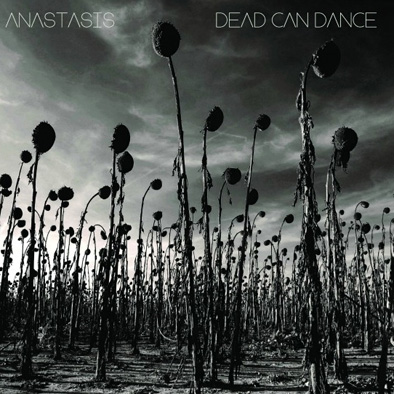 Dead Can Dance released a string of unique and wonderful albums during their prime, but I absolutely loathed 1996's Spiritchaser, so their break-up in its wake seemed like a fine artistic decision to me.  I never expected them to ever record new material again, as Lisa Gerrard seemed to be doing quite well on her own as a soundtrack composer and lives on a completely different continent than the comparatively dormant Brendan Perry, and yet...here we are.  As I expected, the reunited duo do not quite recapture the magic of classics like The Serpent's Egg, but there are still some glimpses of it amidst this oft-perplexing effort.
Dead Can Dance released a string of unique and wonderful albums during their prime, but I absolutely loathed 1996's Spiritchaser, so their break-up in its wake seemed like a fine artistic decision to me.  I never expected them to ever record new material again, as Lisa Gerrard seemed to be doing quite well on her own as a soundtrack composer and lives on a completely different continent than the comparatively dormant Brendan Perry, and yet...here we are.  As I expected, the reunited duo do not quite recapture the magic of classics like The Serpent's Egg, but there are still some glimpses of it amidst this oft-perplexing effort.
It is very easy to forget how radical, visionary, and impossibly cool Dead Can Dance were at their peak in the late '80s.  I thought I had pretty adventurous taste as a teenager (Sonic Youth, Skinny Puppy, extreme metal, etc.), but my first exposure to Gerrard and Perry's work left me utterly bewildered.  I simply could not process that two people could be so aggressively out of time and out of fashion, yet sound so captivating doing it.  They were certainly the only band that I had ever heard that embraced an ethno-medieval aesthetic, but their genius and idiosyncrasy went much deeper than that: Brendan Perry resembled an anachronistic goth Frank Sinatra and Lisa Gerrard sounded like the high priestess in some kind of ancient cult.  It was almost impossible for me to wrap my mind around the fact that Lisa and Brendan were actual people who were alive at the same time as me (and in roughly the same cultural environment).  And, of course, their songs were often great.  I was in love.
Many of the elements that I loved back then return for Anastasis, but something is definitely off in a fundamental way.  That is painfully apparent within the first few minutes of the opener, "Children of the Sun."  Not as far off as the self-parodying New Age/Native American dance party aesthetic of Spiritchaser, perhaps, yet off in a way that is much harder to understand.  I had envisioned myriad ways for a new Dead Can Dance album to disappoint me, but I never entertained the possibility that they would attempt to sound contemporary or artificial.  Unfortunately, that is exactly what they did, as "Children" is built upon a very "now" groove and is rife with obvious synth textures and faux-sounding strings and horns.  That seems completely counter to the band's entire raison d'être.  Also, it is unspeakably depressing to think of Perry and Gerrard composing an album with computers and synthesizers.
Without bizarre, organic instrumentation and an otherworldly, ritualistic atmosphere, there is not much about "Children of the Sun" that is distinctly "Dead Can Dance" other than Brendan's vocals, which sound as deep and soulful as ever.  Unfortunately, the words that he has chosen to soulfully sing are sometimes wince-inducingly bad ("We are children of the sun, our journey's just begun, sunflowers in our haaaaaaaaair").  That is pure drivel and he made it the goddamn chorus of the song (and it does not sound any more profound when sung).  I do not understand what happened, as he has clearly shown himself to be capable of writing wonderfully enigmatic and richly metaphoric lyrics in the past.  He knows better than to rhyme every line and be incredibly prosaic and literal.
I do not know why I kept listening past the first song, but things thankfully got quite a lot better with the Gerrard-sung "Anabasis," which is largely indistinguishable from Dead Can Dance at their best (the piano in the outro being one of the only divergences).  "Agape" follows a similar path with similar success, but augments its Middle Eastern strings with an attempt at a sexy groove which arguably works.  Unfortunately, it is followed by another egregious misfire: Perry's "Amnesia."  This time the lyrics and vocals mostly meet my approval, but the instrumentation is pretty much that of a rock band (piano, drum kit, bass) with some gloomy synth coloration added.  Instrumentally, it resembles a somewhat plodding Cure song.  That is unacceptable for Dead Can Dance.  Also, the piano riff at the beginning amusingly reminds me of Double's "The Captain of Her Heart."  That cannot be a good thing.
The remaining four songs continue the odd trajectory of the album's first half, alternating strong pieces with more dubious ones.  Mathematically, that is not bad: half of Anastasis is quite good and can be arguably celebrated as a return to form (somewhat).  The mystery and sheer otherness are gone, but that was probably inevitable (they are victims of their own influence, after all).  And they are no longer a vital creative force, opting to augment and enhance their previous stylistic ground rather than go somewhere bold.
There are also some significant (but neutral) changes that are apparent to people like me who cannot stop deconstructing things (tendency towards "epic" song structures, increased density, very professional and "cinematic" use of strings), but the key thing is that Lisa and Brendan demonstrate that they can still conjure up some great, distinctive melodies.  Unfortunately, the album's less successful moments are bad enough to derail the album...for me, anyway.  Regardless, I am very curious to see if Dead Can Dance's newly homogenized sound draws a new generation of fans (the NPR set?).  After all, Spiritchaser was a significant success.  If so, this could be the beginning of a fruitful second act (but one that is probably not for me).
Samples:
 
Read More
- Administrator
- Albums and Singles
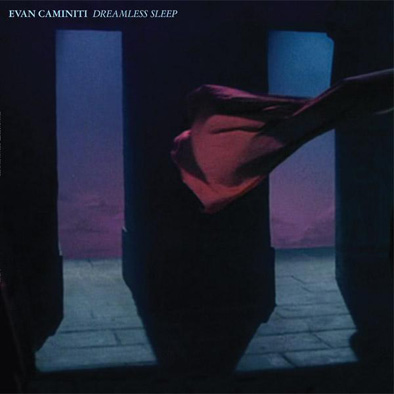 It has been an atypically quiet year for Barn Owl, but Jon Porras and Evan Caminiti have filled the void somewhat with major solo albums every bit as good as their main gig.  While Porras' Black Mesa heavily favored the band's lonely desert rock side, Caminiti's deceptively titled Dreamless Sleep takes a dreamier, dronier approach.  While its shimmering bliss sometimes lacks distinctiveness, Evan does a wonderful job balancing his ambient tendencies with healthy doses of tape hiss, unpredictability, and artfully controlled guitar squall.
It has been an atypically quiet year for Barn Owl, but Jon Porras and Evan Caminiti have filled the void somewhat with major solo albums every bit as good as their main gig.  While Porras' Black Mesa heavily favored the band's lonely desert rock side, Caminiti's deceptively titled Dreamless Sleep takes a dreamier, dronier approach.  While its shimmering bliss sometimes lacks distinctiveness, Evan does a wonderful job balancing his ambient tendencies with healthy doses of tape hiss, unpredictability, and artfully controlled guitar squall.
It is hardly a surprise that one-half of a drone-heavy guitar duo has made a drone-heavy guitar album, but Dreamless Sleep is actually quite different from Caminiti's work in Barn Owl.  That difference will probably only be perceptible to fans, but it is significant nonetheless.  In fact, on pieces like "Bright Midnight," Evan seems to share more common ground with Tim Hecker than he does with Barn Owl.  I sincerely doubt that was deliberate though.  Rather, it likely stems from a radical change in Caminiti's process: he originally recorded the album onto a four-track in 2011 before leaving for a tour.  When he returned, he opted to radically overhaul and deconstruct what he had done.  The resultant aesthetic turned Evan's expected suite of glimmering EBow and synth drones into something a bit more gritty and satisfying, as his sustained tones sometimes stutter and battle washes of static and feedback.  That added contrast, tension, and unpredictability essentially elevate this album from a decent, but forgettable one to an unquestionably good one, as some of Evan's unmolested passages veer dangerously close to "pastoral."
There is not a single bad piece among these seven songs, but some definitely work better than others.  In general, Caminiti is at his best when he allows himself a long, slow-burning build-up and at his worst when he disrupts his hazy, languorous spell with something resembling a conventional guitar solo (rare) or when he allows things to get a bit too calm (less rare).  There are exceptions though, as "Symmetry" manages to steal the album despite being one of its shorter pieces, as its frailly shuddering and billowing notes are allowed enough space to be heard and matter.  Naturally,  such a fine piece unintentionally highlights a minor flaw (the recurring pattern of gradually escalating density), but it is hard to find that disappointing in the context of such a creative leap forward.  It also helps that all the songs with similar templates stand among the album's best.  More importantly, the longer pieces are varied and complex enough to render superficial structural similarities mostly irrelevant.  In fact, I had to keep reminding myself that Dreamless Sleep is essentially a solo guitar album recorded on a four-track, which is probably the highest compliment that I can pay Caminiti.
Samples:
 
 
Read More
- Administrator
- Albums and Singles
 This debut full-length from the Berlin-based Ekomane shares a lot of conceptual common ground with Caterina Barbieri (one of Important's previous break-out sensations), though the two artists have radically different approaches to composition. For example, both artists are quite enamored with using slow shifts in repeating patterns to wonderfully hypnotic and near-psychotropic effect. Ekomane, however, largely eschews hooks or anything resembling conventional songcraft in favor of a visceral, slow-motion onslaught of phase-shifting fragments in immersive quadraphonic sound. Given that focus on intensity and psychoacoustic sorcery, I am not sure that this live document from 2018's Ars Electronica festival quite captures Ekomane at the peak of her powers, but the opening "Solid of Revolution" is certainly a beguiling introduction to Ekomane's distinctive aesthetic.
This debut full-length from the Berlin-based Ekomane shares a lot of conceptual common ground with Caterina Barbieri (one of Important's previous break-out sensations), though the two artists have radically different approaches to composition. For example, both artists are quite enamored with using slow shifts in repeating patterns to wonderfully hypnotic and near-psychotropic effect. Ekomane, however, largely eschews hooks or anything resembling conventional songcraft in favor of a visceral, slow-motion onslaught of phase-shifting fragments in immersive quadraphonic sound. Given that focus on intensity and psychoacoustic sorcery, I am not sure that this live document from 2018's Ars Electronica festival quite captures Ekomane at the peak of her powers, but the opening "Solid of Revolution" is certainly a beguiling introduction to Ekomane's distinctive aesthetic.
Anyone looking for multiple vocalists (or any vocals at all, for that matter) on this album is headed for a major disappointment, as Multivocal sounds like a pure synth album and a hyper-minimal one at that.It was actually created using Max/MSP though, which presumably lends itself well to the extreme control and rhythmic precision needed to compose in this vein.Each side of the record features a single longform work built from a single simple pattern, though the two pieces apparently "mirror each other with the same principle in different musical scales."I suppose that is probably true, as the two pieces ultimately have very different tones, but the initial difference between the two is primarily one of where they start and where they are ultimately headed: "Solid of Revolution" comes right out of the gate as an arpeggiated melodic fragment whereas "Never Odd or Even" slowly unspools from a single repeating chord. The latter is admittedly the more impressive feat of structural sleight of hand, as an initially unpromising motif slowly blossoms into something quite complex.That said, "Solid of Revolution" benefits greatly from foregoing such a long, slow build-up, as I am immediately drawn in by the moody, futuristic-sounding hook and my interest only deepens as it starts to undergo subtly hallucinatory rhythmic permutations.As it unfolds, it becomes increasingly dizzying and disorienting, as the pattern seems to seamlessly blur, smear, change tempo, and cohere into entirely new patterns without ever losing any of its haunted, neon-lit atmosphere or sense of relentless forward motion.
"Never Odd or Even," on the other hand, is a far more staccato, candy-colored, and deconstructed-sounding affair.Initially, however, it is just a single weird chord that sounds a lot like an accordion.Gradually though, the reason for that chord's unusual harmonic character becomes increasingly clear, as Ekomane slowly pulls it apart until the individual notes form a lurching and kaleidoscopic melody of sorts.It would be a stretch to say that I actually like the resultant motif, but it certainly does provide a deliriously manic counterpoint to Multivocal's tense and obsessive first half.In fact, it is almost nightmarishly cheery, resembling a locked groove of an accordionist covering a radiant and burbling New Age piece at the wrong speed.Ekomane definitely gets points for originality, as a strong case could made that she successfully weaponized burbling kosmische psychedelia as a sanity-eroding swarm of fluttering synth-like tones.Eventually, however, it all condenses back into a single chord for an impressive bit of structural symmetry.As far as cool tricks go, "Never Odd of Even" is a legitimately impressive and imaginative feat, as it is akin to a prism diffracting white light into an entire spectrum of colors, then stealthily and imperceptibly reversing the process.Unfortunately, the strength of the motif being pulled apart is not quite sufficient to carry the piece (though my general aversion to major keys probably did not help matters).
My mixed feelings about the album's second piece aside, it is easy to see why Multivocal was one of Important's most eagerly anticipated albums in recent memory: Ekomane has a compelling and unique vision and she executes it with masterful control and focus.Moreover, "Solid of Revolution" is a worthy addition to the canon of great phase-manipulation works previously recorded by titans like Alvin Lucier and Steve Reich, as it marks an inspired evolution rather than a mere homage.When Ekomane is at her best, her shifting phase experiments feel like fresh and vital contemporary synth music rather than mere cerebral experimentation for its own sake.Also, these pieces have a lot more moving parts than classic phase-shift pieces built from just vocal phrases or clapping and Ekomane's minimalism prevents her from masking any seams with drones or accompanying chords.Consequently, I have no misgivings at all about declaring Multivocal to be a genuinely impressive feat of sound architecture.I am very curious to hear what Ekomane will achieve when she eventually records a studio album, as even Steve Reich only recorded a handful of phase-shift pieces in his heyday.That leaves quite a lot of unexplored possibility in this hyper-constrained niche and "Solid of Revolution" suggests that Ekomane is exactly the right person to explore it.
Samples can be found here.
Read More


